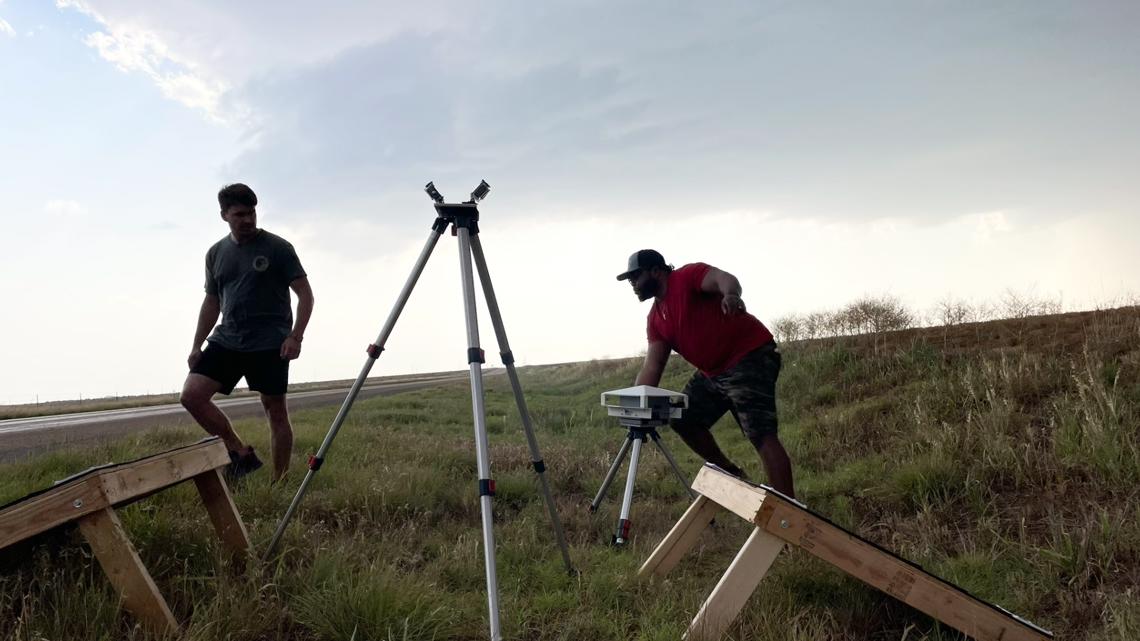Researchers use portable roofs to study large hail impacts
Scientists deployed portable roofs in front of severe hail storms this spring to help pave the way to more durable home materials. Researchers from the Institute for Business and Home Safety (IBHS) in Colorado have deployed portable roofs in front of severe hailstorms to study large hail impacts. This is part of a field study that involved 28 rooftops being deployed into severe hail storms with stones measuring 1 to 2 inches. The researchers also explored the internal structure of large hailstones, using a new technique for field research. The goal is to reduce the cost of hail damage and prevent future disasters like the recent $1 billion metro Denver storm and the $2 billion storm from May 2017. Researchers hope this research will lead to new hailstorman provisions in building codes and more durable materials being added onto roofs.

Veröffentlicht : vor 11 Monaten durch Author: Cory Reppenhagen in Weather
Scientists deployed portable roofs in front of severe hail storms this spring to help pave the way to more durable home materials.
Example video title will go here for this video
Example video title will go here for this video
DENVER — Researchers with the Institute for Business and Home Safety (IBHS) just wrapped up a daring field campaign where they deployed portable roofs in front of severe hailstorms on the central plains.
In this first of its kinds study, they successfully deployed 28 rooftops into severe hailstorms with stones measuring 1 to 2 inches. The science teams are now evaluating the damage back at the IBHS laboratories in Chester County, South Carolina.
As we wrap up #IBHSHail24 this year, a question we've received is what do we do with all this data we capture over the two weeks in the field?
The answer: Many ways! @IBHS_org Lead Research Meteorologist @igiammanco33 shares a few! #hail #research pic.twitter.com/oKY8hP80rT — IBHS Hail Study (@ibhshailstudy) June 7, 2024
They also got a unique look inside large hailstones by slicing them with a hot wire cutter. Also, a new technique for field research.
“We believe some of the secrets about why hailstones are as strong as they are or maybe how soft they are lies in that internal structure," said Ian Giammanco, the lead research meteorologist for IBHS. "We've dissected hailstones in a laboratory setting but there's great value in being able to immediately cut them open, and having such a wide variety of stones to choose from."
The goal is to cut down on the monster price tags that come with hail damage. He said the estimated $1 billion metro Denver storm from this May and the $2 billion storm from May 2017 might just be the tip of the iceberg for a booming Colorado Front Range.
“The targets just gotten really, really big and so now you’re looking at the $3-4 billion storm," he said. "Is $5 billion in the cards? I think it probably is if we’re not going to make any changes to how we build.”
He said most of the roofs damaged by the latest metro Denver storm will just get replaced by the same subpar materials. He hopes this daring research will lead to new hailstorm provisions in building codes.
“And the next time they have to get replaced, with that code in effect, it means the more durable materials are going to go onto roofs," he said. "This is the way we’re going to take a bite out of the damage that’s produced every single year.”
